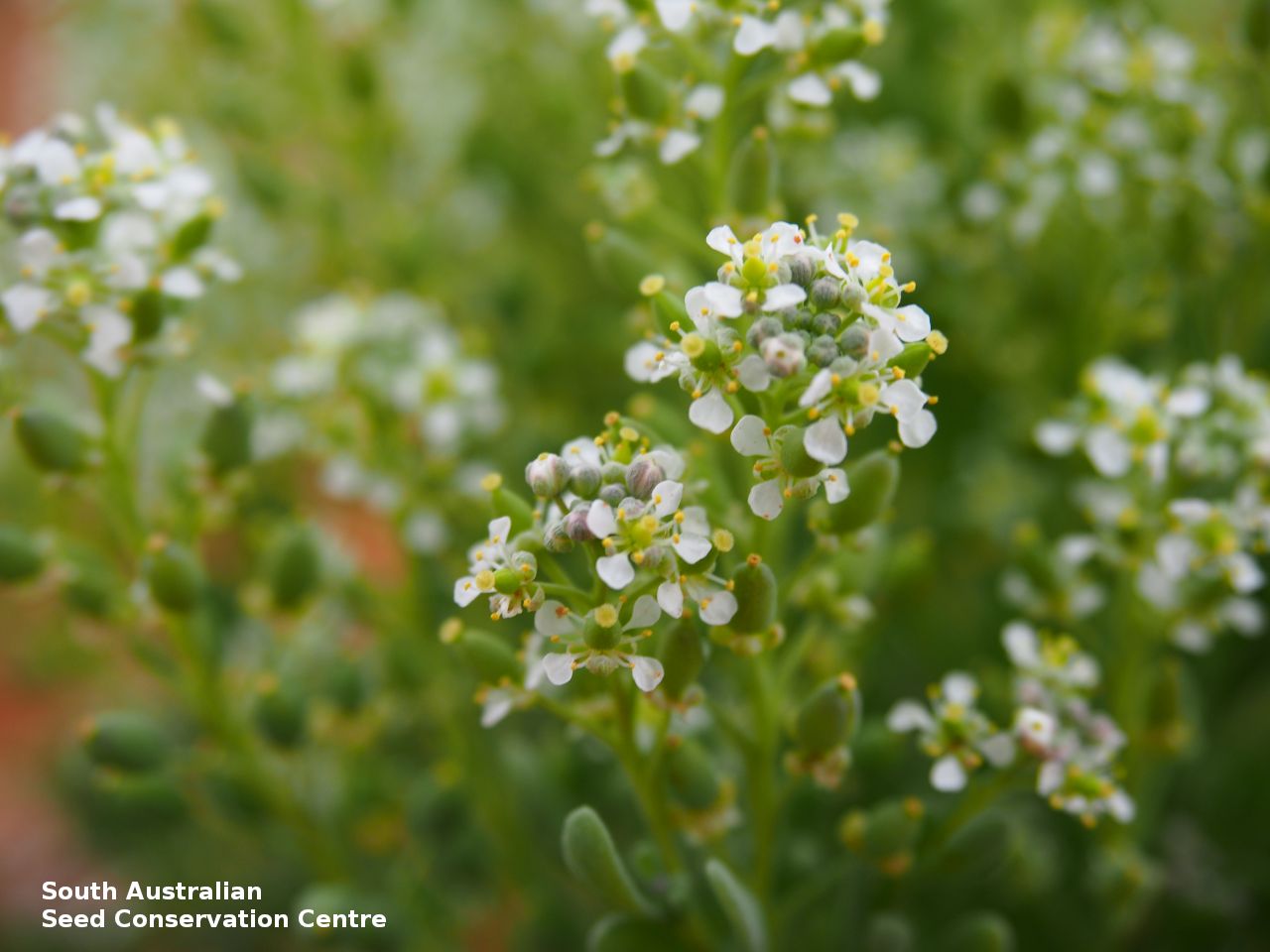Fat Spectacles
Display all 14 images














Regional Species Conservation Assessments per IBRA subregion.


Least concern
Near threatened
Rare
Vulnerable
Endangered
Critically endangered
Extinct
Data deficient
Adelaide
Arkaroola
Ceduna
Coober Pedy
Hawker
Innamincka
Marla
Marree
Mount Gambier
Oodnadatta
Renmark
Wudinna
Keith
Yunta
Display IBRA region text
| Northern Flinders (FLB05) | Flinders Lofty Block | Near Threatened [annual, grows on stony ground] |
| Gawler Lakes (GAW03) | Gawler | Rare (IUCN: RA d(i,ii)) (Probable Decline) |
| Arcoona Plateau (GAW04) | | Rare (IUCN: RA d(i,ii)) (Probable Decline) |
| Kingoonya (GAW05) | | Rare (IUCN: RA d(i,ii)) (Probable Decline) |
| Torrens (GAW06) | | Rare (IUCN: RA d(ii)) [annual, grows on stony ground] |
| Commonwealth Hill (GAW08) | | Rare (IUCN: RA d(ii)) [annual, grows on stony ground] |
| Maralinga (GVD03) | Great Victoria Desert | Rare (IUCN: RA d(i,ii)) (Probable Decline) |
| Dieri (SSD03) | Simpson Strzelecki Dunefields | Near Threatened [annual, grows on stony ground] |
| Warriner (SSD04) | | Near Threatened [annual, grows on stony ground] |
| Strzelecki Desert (SSD05) | | Near Threatened [annual, grows on stony ground] |
| Breakaways (STP01) | Stony Plains | Near Threatened [annual, grows on stony ground] |
| Oodnadatta (STP02) | | Least Concern [annual, grows on stony ground] |
| Murnpeowie (STP03) | | Least Concern [annual, grows on stony ground] |
| Peake-Dennison Inlier (STP04) | | Least Concern [annual, grows on stony ground] |
| Witjira (STP06) | | Rare (IUCN: RA d(ii)) [annual, grows on stony ground] |
| Baltana (STP07) | | Least Concern [annual, grows on stony ground] |
| Sturt Stony Desert (CHC02) | Channel Country | Near Threatened [annual, grows on stony ground] |
| Diamantina-Eyre (CHC04) | | Near Threatened [annual, grows on stony ground] |
| Coongie (CHC06) | | Least Concern [annual, grows on stony ground] |
| Mann-Musgrave Block (CER01) | Central Ranges | Rare (IUCN: RA d(ii)) [annual, grows on stony ground] |
| Everard Block (CER03) | | Rare (IUCN: RA d(ii)) [annual, grows on stony ground] |
| Pedirka (FIN04) | Finke | Rare (IUCN: RA d(ii)) [annual, grows on stony ground] |
| Northern Flinders (FLB05) | Flinders Lofty Block | Near Threatened [annual, grows on stony ground] |
| 5 of 8 subregions | Gawler | Rare |
| Maralinga (GVD03) | Great Victoria Desert | Rare (IUCN: RA d(i,ii)) (Probable Decline) |
| 3 of 4 subregions | Simpson Strzelecki Dunefields | Near Threatened |
| 6 of 7 subregions | Stony Plains | Least Concern , Near Threatened , Rare |
| 3 of 4 subregions | Channel Country | Least Concern , Near Threatened |
| 2 of 3 subregions | Central Ranges | Rare |
| Pedirka (FIN04) | Finke | Rare (IUCN: RA d(ii)) [annual, grows on stony ground] |
Etymology
Menkea, named after Karl Theodor Menke (1791-1861), a German malacologist, physician and botanist. Crassa, from the Latin 'crassus', meaning thick, fleshy, referring to its thick, fleshy leaves.
Distribution and status
Found in the northern part of South Australia growing in a variety of habitats on sandy, often disturbed soils. Also found in the Northern Territory and Queensland. Native. Common in South Australia. Uncommon in the other States.
Herbarium regions: North Western, Lake Eyre, Gairdner-Torrens, Flinders Ranges, Eastern, Eyre Peninsula
NRM regions: Alinytjara Wilurara, Eyre Peninsula, South Australian Arid Lands
AVH map: SA distribution map (external link)
Plant description
Decumbent or prostrate herb with stems to 25 cm long; glabrous, stout, branching. Basal leaves linear to spatulate; entire, fleshy, glaucous with stem leaves reducing. Inflorescence an elongating spike with tiny white, cream or yellow flowers. Flowering between June and October. Fruits are brown ellipsoid pod to 6.5 mm long and 3.6 mm wide; slightly compressed. Seeds are dark brown ellipsoid seed to 0.6 mm long and 0.4 mm wide, with a slightly wrinkled surface. Seed embryo type is bent.
Seed collection and propagation
Collect seeds between September and November. Collect maturing pods those turning pale brown with hard seeds inside. Take care with the pods, as they split open easily. Place the pods in a tray and cover with paper to prevent seeds from popping out and leave to dry for a week. Then rub the dried pods gently by hand to dislodge the seeds. Use a sieve to separate the unwanted material. Store the seeds with a desiccant such as dried silica beads or dry rice, in an air tight container in a cool and dry place. From two collections, the seed viability was high, ranging from 80% to 100%.
| Location | No. of seeds
(weight grams) | Number
of plants | Date
collected | Collection number
Collection location | Date
stored | % Viability | Storage
temperature | BGA
MSB | 390,000 (7.65 g)
390,000 (7.65 g) | 100+ | 22-Oct-2007 | MJT148
Lake Eyre | 19-Sep-2008 | 80% | -18°C |
| BGA | 85,600 (2.74 g) | 20+ | 5-Oct-2010 | TST1023
Lake Eyre | 1-Jan-2012 | 100% | -18°C |
Location: BGA — the seeds are stored at the Adelaide Botanic Gardens, MSB — the seeds are stored at the Millennium Seed Bank, Kew, England.
Number of plants: This is the number of plants from which the seeds were collected.
Collection location: The Herbarium of South Australia's region name.
% Viability: Percentage of filled healthy seeds determined by a cut test or x-ray.















